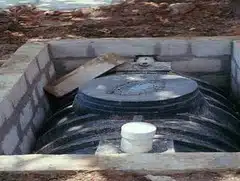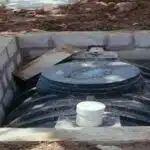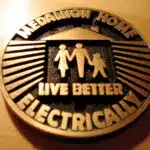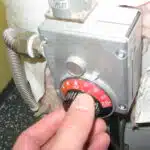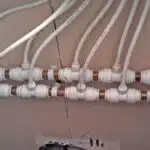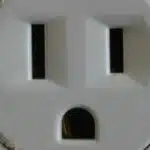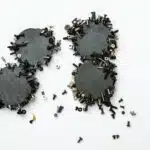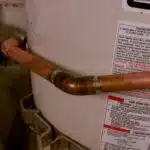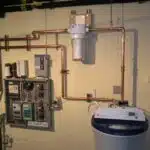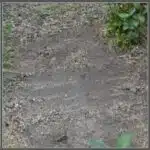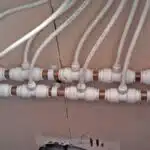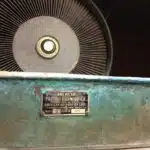Septic tanks are an essential component of residential and commercial waste management systems. They function by collecting, storing, and treating wastewater from homes and businesses. Understanding the operation of a septic tank is crucial for homeowners, installers, and maintenance professionals.
The purpose of this article is to explain how a septic tank works, including its design features, components, and processes. By understanding the functions of each part of the system, readers will be able to make informed decisions about their septic system’s maintenance requirements. Furthermore, knowledge about septic systems can help individuals reduce their impact on the environment by ensuring proper disposal of waste products.
The Purpose Of A Septic Tank
Septic tank systems are a crucial aspect of modern-day plumbing for homes and businesses. The primary purpose of a septic tank is to collect and treat wastewater from various sources within the property before releasing it into the environment. This system helps protect public health by preventing untreated sewage from contaminating nearby water sources.
One of the significant benefits of having a septic tank system is that it can help save money in the long run. Compared to municipal sewer systems, septic tanks require less maintenance and upkeep, reducing overall costs. Additionally, proper installation techniques can prolong the life of the septic system, ensuring that it functions optimally for decades.
Proper installation techniques involve several key steps to ensure that the septic tank operates efficiently. First, it is essential to choose an appropriate site for installation; this means selecting an area with suitable soil conditions and adequate space for excavation equipment. Second, proper sizing is critical; choosing a tank that meets or exceeds capacity requirements ensures optimal performance. Finally, proper installation techniques include using quality materials and following industry standards to prevent leaks or other issues that may compromise the functionality of the system.
As we transition into discussing basic design features of a septic tank system, it is important to note that each component plays an integral role in maintaining optimal performance. From inlet pipes to outlet pipes and everything in between, understanding how these features work together is essential for maintaining a healthy septic system over time.
Basic Design Features Of A Septic Tank
A septic tank is a critical component of any household or commercial property’s plumbing system. It serves to collect and treat wastewater, which includes all the dirty water that flows out of your house or business. The septic tank has three primary functions: to hold solids and scum, to allow wastewater to flow through for treatment, and to discharge the treated effluent into a drain field.
Septic tanks are made of various materials such as concrete, fiberglass, polyethylene, or other durable materials. Each material has its advantages and disadvantages in terms of cost, durability, and maintenance needs. Concrete is more expensive but lasts longer than plastic tanks. Fiberglass tanks are lightweight but may crack easily if not installed correctly. Polyethylene tanks are easy to install but may not last as long as concrete or fiberglass.
Maintenance costs for septic tanks vary depending on several factors such as frequency of use, size of the tank, type of materials used for construction, and location. Regular maintenance is essential to ensure that your septic system operates efficiently without any issues. Homeowners should schedule periodic inspections by a professional plumber to check for signs of wear and tear on the tank walls or inlet pipes.
The inlet pipe is the first point where wastewater enters the septic tank from your home or business. It connects directly from your building’s main sewage line into the septic system. The inlet pipe must be large enough to handle the volume of wastewater entering the tank at any given time without causing backups or overflows. Inlet pipes can become clogged with debris over time if not properly maintained, so it’s essential to have them checked regularly by a qualified plumber.
The Inlet Pipe
As wastewater leaves your home, it enters the septic tank through the inlet pipe. This pipe is typically made of PVC or ABS plastic and extends from the house to the tank. It’s important to ensure that this pipe is properly installed to prevent any leaks or blockages.
During installation, make sure the inlet pipe has a downward slope towards the tank. This will help gravity pull wastewater into the tank efficiently. A good rule of thumb is to have at least a quarter-inch drop for every foot of length. Additionally, consider installing a cleanout port near the house-end of the inlet pipe. This will allow for easy access in case of any clogs or blockages.
Maintenance of the inlet pipe is crucial for proper function of your septic system. Regularly inspect for cracks or damage and promptly repair any issues found. Also, be mindful of what you’re flushing down your drains as certain items can cause blockages in your pipes and harm your septic system overall. By following these installation tips and maintenance guides, you can ensure that your septic system functions optimally and avoids costly repairs in the future.
Moving forward from understanding how an inlet pipe works, let’s discuss another important component: the outlet pipe.
The Outlet Pipe
The outlet pipe is a crucial component of a septic tank system, as it is responsible for draining the effluent from the tank into the drain field. Proper maintenance of the outlet pipe can prevent blockages and ensure that the septic system operates efficiently. Regular inspection of the outlet pipe is recommended to identify any signs of damage or corrosion.
Outlet pipe maintenance involves keeping an eye out for any signs of blockage or obstruction, such as slow drainage or gurgling sounds in sinks and toilets. If blockage is detected, it is important to address it immediately by removing any debris that may be causing the obstruction. Additionally, regular cleaning with specialized equipment can help prevent blockages and maintain proper flow through the outlet pipe.
Prevention of outlet pipe blockage can also be achieved by being mindful of what enters the septic system. Avoid flushing non-biodegradable materials down toilets, such as feminine hygiene products, wipes, and paper towels. These items can accumulate in the outlet pipe and cause blockages over time. By practicing good septic system habits and maintaining a healthy outlet pipe, homeowners can ensure that their septic systems operate smoothly for years to come.
As we have seen, proper maintenance and prevention techniques are essential for ensuring that the outlet pipe of a septic tank functions properly. In our next section, we will explore another important component of a septic tank: the baffle.
The Baffle
A baffle is a device used in septic tanks to help separate solid waste from liquid waste. It is typically installed over the inlet pipe of a septic tank and works by forcing the incoming wastewater to flow upward and then downward. This creates a swirling effect, which slows down the flow of the wastewater, allowing solid particles to settle to the bottom of the tank. The baffle also helps to prevent scum from entering the leach field. The benefits of installing a baffle include improved tank performance, reduced water pollution, and improved septic system longevity.
What Is A Baffle
Baffles are an essential component of a septic tank system. They help to create a separation between the solid and liquid waste that enters the tank. A baffle is a wall-like structure that divides the septic tank into two compartments, an inlet and outlet chamber. The inlet chamber receives wastewater from the house, while the outlet chamber releases treated water out towards the drain field. The main purpose of baffles is to prevent solids from leaving the inlet chamber and clogging up the drain field.
The importance of baffles cannot be overstated when it comes to maintaining a healthy septic system. Without them, solid waste can easily escape from the inlet chamber and enter into the drain field where it can cause serious damage. This can lead to costly repairs or even require complete replacement of your septic system. Ensuring that your baffles are in good working condition is crucial for keeping your septic system functioning properly.
To maintain your baffles, regular inspections by a professional should be carried out at least every three years or more frequently if you experience any issues with your system. In addition, homeowners should ensure that no objects such as grease or non-biodegradable items are entering their septic systems, as they can cause blockages which could damage their baffles. By taking proper care of your baffles, you can prolong the life of your septic system and avoid costly repairs down the road.
How A Baffle Works
The baffle serves as a crucial component of a septic tank system, maintaining its efficiency. The wall-like structure creates two chambers: the inlet chamber and the outlet chamber. The inlet chamber receives all wastewater from the house, while the outlet chamber releases treated water towards the drain field. Its primary purpose is to prevent solid waste from leaving the inlet chamber and clogging up the drain field.
A baffle works by creating a barrier that separates liquid waste from solid waste. Solid waste settles at the bottom of the inlet chamber, while liquid waste floats on top of it. As water enters into the inlet chamber, it passes through an opening in the baffle and flows downwards, pushing settled solids towards the bottom. The liquid then exits via another opening in the baffle that leads into an outlet chamber where any remaining solids are filtered out before being released into a drain field.
To ensure that your septic system functions efficiently, regular maintenance techniques must be carried out on your baffles every three years or more frequently if needed. Homeowners must also avoid introducing non-biodegradable items such as grease or other objects into their septic systems that could damage their baffles. By taking proper care of your baffles, you can prolong your septic system’s life and avoid costly repairs down the road.
Benefits Of Baffle
The baffle is an essential component of a septic tank system that separates liquid waste from solid waste. Its primary role is to maintain the efficiency of the system by preventing clogs in the drain field caused by solid waste. However, apart from its fundamental function, the baffle provides numerous benefits to homeowners with septic systems.
One of the significant benefits of having a baffle in your septic tank system is its ability to prevent foul odors from entering your home’s living spaces. The wall-like structure creates two chambers that separate liquid and solid waste, preventing odor-causing gases from escaping into your home’s surroundings. Additionally, baffles also serve as storage for scum, which is lighter than water and floats on top of it. This storage reduces the amount of scum that reaches your drain field, decreasing clogging and prolonging its lifespan.
The installation process of baffles may be costly initially but can save homeowners money in the long run by reducing maintenance costs. By separating liquid and solid wastes effectively, septic tanks with baffles require less frequent pumping than those without them. Regular maintenance techniques on your baffles every three years or more frequently if needed can also increase their longevity and prevent costly repairs down the road. Overall, having a baffle in your septic system provides several benefits that homeowners should consider when installing or maintaining their systems.
The Tank’s Capacity
Anticipated objection: “Why does the size of the tank matter?”
The capacity of a septic tank is one of the most crucial factors in the proper functioning of a septic system. The size of the tank must be appropriate for the number of occupants in the household, as well as their typical water usage. This is because the tank’s capacity determines how much wastewater it can hold before it needs to be pumped out.
When a septic system is installed, a professional will assess the number of bedrooms in your home and estimate your daily water usage to determine what size tank you need. A smaller tank may seem like an attractive option because it requires less space and may be less expensive, but if it’s too small, it won’t be able to handle all of your household’s wastewater. This means that solids could overflow into the drain field or clog up pipes, leading to costly repairs.
In summary, choosing an appropriately sized septic tank is crucial for ensuring your system works effectively. It’s important to work with an experienced professional during installation to correctly assess your household’s needs and choose a tank that will provide sufficient capacity for years to come.
- Tank size must match household occupancy and water usage.
- Installing a smaller than recommended tank can result in costly repairs.
- Working with professionals during installation ensures appropriate sizing for long-term effectiveness.
As we consider how a septic system functions, we must also examine another critical aspect: the sludge layer. This layer develops over time as solid waste settles at the bottom of the tank while liquids rise to the top. As this layer grows thicker, it takes up more space in the tank and reduces its overall capacity. In our next section, we’ll explore how regularly pumping out this layer is vital for maintaining your system’s health and longevity.
The Sludge Layer
The Tank’s Capacity section explained how septic tanks are sized based on the household’s water usage. The tank’s size is vital to ensure that wastewater remains in the tank for enough time to allow solids to settle down, and effluent (water) to flow out of the tank. However, as wastewater enters the septic tank, it undergoes biological processes facilitated by microorganisms present in the system.
The sludge layer is a crucial aspect of septic systems, and its removal is necessary for proper system functioning. Over time, solids settle down at the bottom of the tank, forming a thick layer of sludge. Sludge removal should be performed by a professional every three to five years to prevent clogging or blockages in the drainage field. Neglecting this maintenance task can lead to costly repairs or replacement of the entire system.
Bacterial activity plays a critical role in maintaining healthy bacterial levels within septic tanks. Bacteria break down organic matter present in wastewater into simpler compounds that are less harmful to the environment and human health. The decomposition process reduces waste volumes and eliminates toxic substances from wastewater. Regular maintenance ensures that bacterial activity levels remain optimal and protect against environmental damage caused by untreated sewage.
The next section will address another essential aspect of septic systems: scum layers. Understanding how this layer affects overall system health and functioning is essential for property owners who want to maintain their septic tanks properly.
The Scum Layer
The scum layer is a crucial component of any septic tank. It sits at the top of the tank and is made up of substances that are lighter than water, such as oils, fats, and grease. Without this layer, the wastewater that enters the tank would mix with these substances and create a thick sludge that would be difficult to remove. The importance of this layer cannot be overstated, as it allows for easier removal of waste from the septic system.
To remove scum from the septic tank, there are a few different techniques that can be used. One common method is to use a skimmer, which is a device that floats on top of the water in the tank and collects any scum that rises to the surface. Another method involves using bacteria or enzymes to break down organic matter in the scum layer so that it can be more easily removed. Whatever method is used, it’s important to regularly remove scum from the septic tank to prevent buildup and ensure proper functioning.
In addition to regular removal techniques, it’s also important to take steps to prevent excessive amounts of scum from entering the septic system in the first place. This can include avoiding flushing non-biodegradable materials down toilets or pouring cooking oils and grease down drains. By taking these preventative measures and regularly removing scum from septic tanks, homeowners can help ensure their systems function properly for many years to come.
As we’ve discussed, maintaining a healthy scum layer is essential for proper functioning of your septic system. However, once waste has been broken down in your tank by bacteria and other methods discussed earlier, it will need somewhere else to go before being released into your soil absorption field. In order for this process of final treatment to occur effectively without causing backup or damage to your property or home; you must have an appropriately designed drainfield or leach field installed by professionals who specialize in this kind of work.
The Drainfield
After the scum layer, the wastewater exits the septic tank and enters the drainfield. The drainfield is a network of pipes buried in gravel trenches that allow the wastewater to slowly seep into the surrounding soil. This process further breaks down and filters out any remaining contaminants before the water eventually reaches groundwater sources.
Maintaining the drainfield is crucial for ensuring its long-term efficiency and effectiveness. Regular inspections should be conducted every three years, or more frequently for larger households or higher water usage. Drainfield maintenance involves removing any tree roots that may have infiltrated the pipes, as well as pumping out any accumulated solids that may have made their way into the drainfield.
While many companies claim that septic tank additives can enhance system performance, their effectiveness remains largely unproven. In fact, some additives may even harm your system by disrupting natural microbial processes or causing solids to accumulate in the drainfield. Therefore, it is important to avoid using these products and instead focus on regular maintenance practices to keep your system running smoothly.
As wastewater enters the septic tank through a mainline from your home’s plumbing system, it first passes through an inlet baffle that helps prevent solids from immediately entering and clogging up the tank. From there, gravity causes heavier solids to sink to the bottom forming sludge while lighter materials such as oil and grease float to form a scum layer on top of the water. This separation process is crucial because it allows only partially-treated liquid effluent to exit into the drainfield where final treatment takes place before reaching groundwater sources.
How Wastewater Enters The Septic Tank
Wastewater enters the septic tank through a pipe that is connected to the home’s plumbing system. The wastewater composition can vary depending on the activities performed in the house, such as cooking, cleaning, and bathing. Generally, it consists of water, organic matter, bacteria, and other solids.
During the septic system installation process, a properly sized tank is chosen based on the number of bedrooms in the house and local regulations. The tank’s location is carefully chosen to ensure accessibility for maintenance purposes and to avoid potential environmental hazards. After installation, the inlet pipe is connected to the plumbing system and leads into one end of the tank while an outlet pipe extends from the other end.
It’s important to note that what happens inside the septic tank depends largely on its size and how well it was designed and installed. A poorly designed or undersized tank can lead to problems such as backups and overflows. Regular maintenance is essential for preventing these issues from occurring.
- Regular maintenance ensures proper functioning of your septic system.
- Installing a larger septic tank can prevent costly repairs in the future.
- Neglecting proper maintenance can result in environmental hazards.
As wastewater enters the septic tank, it undergoes a treatment process that separates solid waste from liquids. This process effectively begins with a division between scum (floating solids) at the top layer of water within the septic tank and sludge (settled solids) at its bottom layer. The remaining liquid layer called effluent flows out of the tank through an outlet pipe into an absorption field where further treatment occurs.
The Treatment Process
The treatment process of a septic tank involves the removal of waste products from the wastewater. This is done through a series of physical, chemical and biological processes that take place within the tank. The wastewater enters the tank and is allowed to settle for a period of time, during which solids and scum float to the top, while heavy particles sink to the bottom.
The next stage of wastewater treatment in a septic tank involves anaerobic digestion. This is where bacteria break down organic matter present in the wastewater. Methane gas is produced as a result of this process. The gas is released into the atmosphere, while remaining solids are further broken down by bacteria.
As a septic system expert, it’s important to note that wastewater treatment in a septic tank relies heavily on bacterial activity. Bacteria play an essential role in breaking down organic matter found in the wastewater. These microorganisms convert complex molecules into simpler compounds, such as carbon dioxide and water. Without these bacteria, proper treatment of sewage would not be possible. In fact, they are so important that they even help to reduce odors associated with untreated sewage!
The Role Of Bacteria
Bacteria play a crucial role in the functioning of a septic tank system. There are two types of bacteria that aid in the decomposition process: aerobic and anaerobic. Anaerobic bacteria break down organic matter in an oxygen-free environment, while aerobic bacteria require oxygen to carry out their functions. These bacteria work together to break down solids and release gases, which contribute to the natural treatment of wastewater.
The function of bacteria is essential because it helps reduce the amount of solid waste that accumulates in the septic tank over time. As organic material enters the tank, anaerobic bacteria begin to decompose it into simpler compounds such as methane and carbon dioxide. Aerobic bacteria then use these compounds as a food source, further breaking them down into nitrogen, phosphorus, and other nutrients that plants can use for growth. This process helps create a nutrient-rich effluent that can benefit soil quality.
Despite their benefits, one limitation of bacterial treatment is that it cannot remove all pollutants from wastewater. A septic system can have an impact on groundwater quality if not properly installed or maintained. In some cases, alternative treatment systems may be necessary to remove certain contaminants like pharmaceuticals or industrial chemicals before releasing wastewater back into the environment. Understanding the role of bacteria is critical for ensuring optimal performance and longevity of any septic system.
As important as understanding its role is maintaining your septic tank properly so that it continues to function efficiently for years to come. By regularly pumping out accumulated solids every three to five years and avoiding flushing harmful substances like grease or cleaning products down your drains, you can help preserve your septic system’s ability to treat wastewater naturally without causing harm to nearby water sources or ecosystems.
Maintenance Requirements
Regular maintenance is essential to ensure the proper functioning of septic tanks. The most important maintenance task is pumping the tank every three to five years. This process removes the accumulated solids in the tank that can cause clogs and backups. Failing to pump regularly could result in sewage backups or even a complete system failure, which could be costly to repair.
In addition to regular pumping, it’s also crucial to use septic-safe cleaning products. Household cleaners, such as bleach and disinfectants, can kill the beneficial bacteria that break down waste in the tank, leading to a buildup of solids and potential system failure. Using septic-safe products not only helps maintain a healthy balance of bacteria but also protects groundwater from harmful chemicals.
Lastly, homeowners should be aware of what they put down their drains and toilets. Avoid flushing non-biodegradable items such as wipes, feminine hygiene products, and cooking grease, as these can quickly fill up the tank and cause blockages. By practicing good habits like these, homeowners can prolong the lifespan of their septic systems while avoiding costly repairs.
It’s crucial for homeowners to prioritize regular maintenance tasks like pumping and using septic-safe cleaning products. Neglecting these tasks could lead to significant issues down the line and may require expensive repairs. However, by following these simple steps and being mindful of what goes into their septic systems, homeowners can ensure the longevity of their systems while protecting themselves from potential headaches in the future.
Moving forward, recognizing signs of septic tank problems is equally important for homeowners who want to avoid costly repairs or replacements.
Signs Of Septic Tank Problems
Common causes of septic tank problems include lack of maintenance, flushing inappropriate items down the toilet, and overuse of water. Neglecting to have your septic system pumped regularly can cause built-up solids to overflow into the drain field, leading to costly repairs. Additionally, flushing non-biodegradable materials such as diapers and wipes can clog pipes and compromise the effectiveness of your system. Finally, using too much water at once, such as when doing laundry or taking a shower, can overload the system.
Prevention is key in avoiding septic tank problems. Regular maintenance is essential in ensuring that your system functions properly. This includes having your tank pumped every three to five years and inspecting it annually for signs of wear and tear. It’s also important to be mindful of what you flush down the toilet and avoid pouring grease or chemicals down the drain. Conserving water by fixing leaks and spreading out household water usage can also help prevent overloading your septic system.
Recognizing signs of failure in your septic system early on can save you from major repairs later on. Some common indicators include slow draining sinks or toilets, gurgling sounds in pipes, sewage backup in drains or toilets, and foul odors near the drain field. If you notice any of these symptoms, it’s important to contact a professional immediately to assess the issue before it worsens.
Moving forward into our next section on environmental impacts of septic systems, it’s important to note how proper maintenance and care for our systems not only benefits us individually but also has a positive impact on our environment as a whole.
Environmental Impacts Of Septic Systems
Septic systems are commonly used to treat household wastewater in suburban and rural areas. However, these systems can have potential environmental impacts if not properly designed, installed, and maintained. Regulatory standards have been put in place by local governments to ensure that septic systems meet certain criteria and protect against environmental harm.
One of the main concerns with septic systems is their potential impact on water quality. If a system is not functioning properly or is overloaded, untreated wastewater can leak into the ground or surface water. This can lead to the contamination of drinking water sources and harm aquatic ecosystems. Additionally, excess nutrients such as nitrogen and phosphorus from septic systems can contribute to harmful algal blooms in bodies of water.
To minimize the environmental impacts of septic systems, it is important to ensure that they are installed and maintained according to regulatory standards. Homeowners should have their system inspected regularly by a professional and follow guidelines for proper use and maintenance. In addition, upgrading older systems with newer technologies such as aerobic treatment units or sand filters can improve their performance and reduce their environmental impact.
In summary, while septic systems are an effective way to treat household wastewater, they have the potential to negatively impact the environment if not properly designed and maintained. As homeowners, it is our responsibility to ensure that our septic system meets regulatory standards for protecting water quality and minimizing environmental impacts. By doing so, we can help preserve our natural resources for future generations.
Conclusion
A septic tank is a vital component of any property that is not connected to a public sewage system. It functions as an underground chamber designed to receive, store, and treat wastewater from the home or business it serves. The basic design features of a septic tank include inlet and outlet pipes, baffles, and the role of bacteria to break down solid waste.
The inlet pipe directs wastewater into the septic tank where solid particles settle at the bottom while lighter ones float on top. The baffle prevents scum from leaving the tank through the outlet pipe and helps to ensure that only clear liquid flows out. Bacteria work tirelessly within the septic system to naturally break down waste materials and transform them into usable nutrients for plants.
Although septic systems are simple in design, they require periodic maintenance to continue functioning properly. Signs of problems with your septic system can include slow-draining sinks or toilets, unpleasant odors emanating from your yard or plumbing fixtures, and standing water around the drain field.
In conclusion, a well-functioning septic system is essential for maintaining environmental health and ensuring that wastewater is safely treated before being released back into nature. As experts in this field, we understand the importance of keeping your property’s septic system in excellent working condition. Just like how our bodies require regular check-ups and maintenance to remain healthy, so too does your septic system need attention. Neglecting its care can lead to costly repairs or even catastrophic failure – don’t let your septic system become a ticking time bomb waiting to detonate! With proper care and attention, you can rest assured that your property’s wastewater treatment needs will be appropriately handled for years to come – like a well-oiled machine purring along smoothly without disruption!
Image Credits
- “Below-ground septic tank” by eutrophication&hypoxia (featured)

